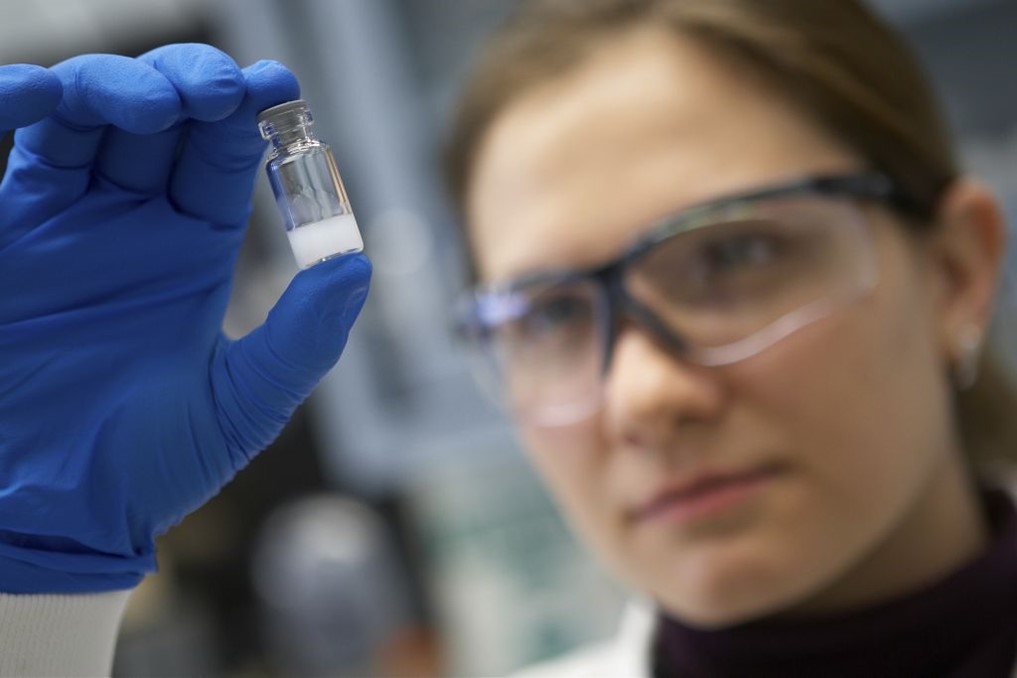Scientists successfully catalyzed photoreactions using transition-metal catalytic complexes with novel ligands
Transition metals exchange electrons with supporting ligands to form complexes that facilitate reaction catalysis in several industries, like pharmaceutical production. Both the metal center and the ligand moiety have pivotal roles in enabling catalysis. While numerous transition metal-catalyzed photoreactions have been developed, only a few new ligands have been reported. Researchers from Chiba University have now developed novel ligands to create transition metal complexes, defining new reaction capabilities.

Image title: Novel ligands can redefine reaction capabilities and improve catalysis for the production of pharmaceuticals
Image caption: Novel PNP-pincer ligands can help platinum-based complexes catalyze reactions under visible light irradiation. The improvement in the use of transition metal catalysts will help improve industrial processes such as the production of pharmaceuticals, dyes, pigments, etc.
Image credit: Sanofi Pasteur from Flickr
Image Source: https://www.flickr.com/photos/sanofi-pasteur/5283273595
License type: CC BY-NC-ND 2.0
Transition metals form catalytic complexes that can speed up various chemical processes, especially in the production of pharmaceuticals as well as various pigments, dyes, and laboratory reagents like sulfuric acid. The use of light emitting diodes (LEDs) has boosted the use of visible light in reaction catalysis, and scientists have developed photo-redox catalysts made of iridium and ruthenium, which facilitate catalysis when irradiated with specific wavelengths of light. Further, scientists have even demonstrated visible light photoreactions with palladium complexes without the use of photo-redox catalysts. While several such transition metal-catalyzed photoreactions have been developed, there has been limited development of new ligands for these reactions; most studies used existing ligands that were developed for thermal reactions. Thus, there has been a notable lack of development of ligands that interact specifically with transition metal catalysts in photoreactions, preventing us from unlocking the true potential of such reactions.
Recently, a team of researchers, led by Professor Tetsuhiro Nemoto from the Graduate School of Pharmaceutical Sciences at Chiba University in Japan, developed novel ligands that can be used in photoreactions with transition metal catalysts. They also demonstrated how the developed ligands interacted with different transition metals to produce different catalytic results for photoreactions.
The team included Mr. Yu Matsuda from the Graduate School of Pharmaceutical Sciences at Chiba University and Dr. Masaya Nakajima, who was affiliated with the same institute at the time of the study but is now affiliated to the Graduate School of Pharmaceutical Sciences at the University of Tokyo. Their work was made available online on July 20, 2023, and was published in Volume 13, Issue 15 of ACS Catalysis on August 4, 2023.
The researchers utilized commercially available 9-phenylacridine to prepare four acridine-containing PNP-pincer ligands, which were then used to create complexes with nickel, palladium, platinum, copper, and cobalt.
The team evaluated the catalytic activity of the complexes for a specific photoreaction called transfer hydrogenation, a common reaction used in various industries. While the nickel complex did not react efficiently, the palladium and platinum complexes successfully catalyzed the reaction to provide a high yield of the final products.
Specifically, the researchers found that the newly developed ligands allowed the platinum complex to successfully catalyze a reaction in the presence of visible light (blue LED irradiation) in a stoichiometric manner. This means that the exact values of reagents needed, and the quantity of product obtained, can be mathematically calculated. The preciseness of the catalysis will allow the streamlining of industrial processes, such as in the production of medicines. Furthermore, the new platinum complex could catalyze the hydroxy/alkoxy alkylation of olefins—a reaction that could not be catalyzed with existing well-known ligands.
The fact that these photoreactions did not occur in the presence of well-known ligands highlights how the newly designed ligands could help define new reaction capabilities. Explaining the results, Dr. Nakajima says, “This research reveals a new reactivity of platinum that was previously unknown. As a result, it has become possible to synthesize new kinds of molecules more efficiently, potentially finding applications in the manufacturing of novel materials and pharmaceuticals.”
The present study is also expected to have numerous long-term implications. “Visible light is utilized as the energy source for such reactions. Thus, sunlight can be used as an endless source of energy, and technological advancement could allow us to perform photoreactions without the constraints that come with the arrangements necessary for thermal reactions, ultimately helping us resolve emerging energy issues,” concludes Dr. Nakajima on an optimistic note.
Indeed, the development of new ligands for transition metal complex photocatalysis can create new possibilities and redefine reaction capabilities, allowing novel solutions to the challenges we face today.
About Professor Tetsuhiro Nemoto
Dr. Tetsuhiro Nemoto is a Professor at the Graduate School of Pharmaceutical Sciences at Chiba University. His research focuses on the development of innovative methodologies and catalytic reactions in the field of synthetic organic chemistry. He utilizes computational chemistry techniques to design functional molecules and unravel the mechanisms of chemical reactions. He has published around 135 research papers with over 3,500 citations. His goal is to develop organic molecules that can be applied in medicinal chemistry research.
Reference
Title: Acridine PNP-Pincer Ligands Enabling Transition Metal-Catalyzed Photoreactions
Authors: Yu Matsuda1, Masaya Nakajima2, and Tetsuhiro Nemoto1
Affiliations:
1Graduate School of Pharmaceutical Sciences, Chiba University
2Graduate School of Pharmaceutical Sciences, Chiba University (at the time of study); Graduate School of Pharmaceutical Sciences, The University of Tokyo (current)
Journal: ACS Catalysis
DOI: 10.1021/acscatal.3c01654
Contact: Tetsuhiro Nemoto,
Graduate School of Pharmaceutical Sciences, Chiba University
Email: tnemoto@faculty.chiba-u.jp
Public Relations Office, Chiba University
Address: 1-33 Yayoi, Inage, Chiba 263-8522 JAPAN
Email: koho-press@chiba-u.jp
Tel: +81-43-290-2018
Recommend
-

Shedding Light on the Public Health Nurses Working at the Front Lines of Disaster-Stricken Areas
2022.12.07
-

The reciprocity of life: The interactive relationships between people, plants, and the environment
2023.05.19
-

Backing Revitalization in Rural Areas: Unearthing the Subtle Heart of the Community
2024.12.27


